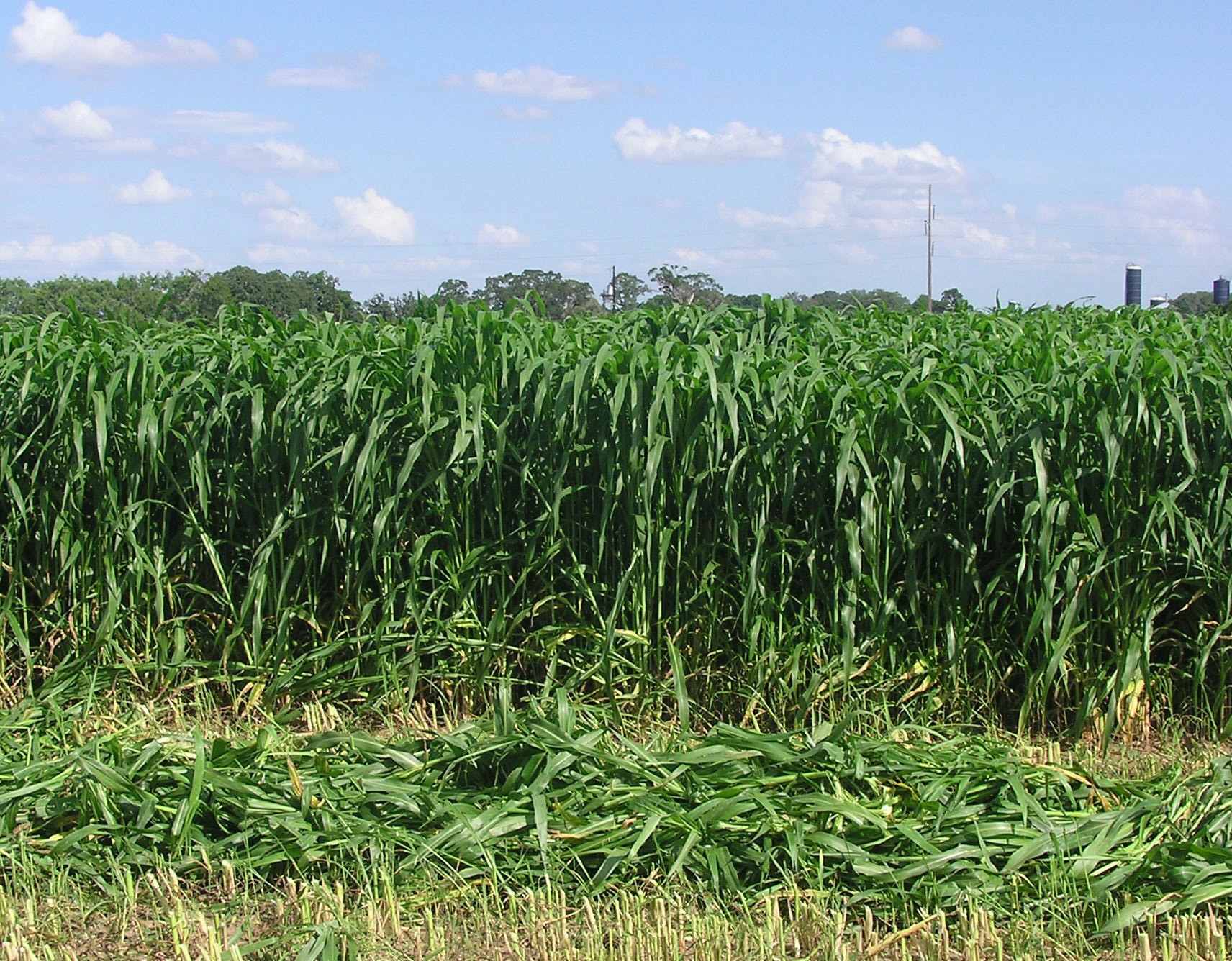KGS 9299AT
Sorghum Sudangrass
Relative Maturity: Medium -Early
Days to Boot Stage: 60-65 days
Mid-RIb Type: Standard Non-BMR
Additional Traits: Aphid-Tolerant
Benefits
● Excellent yield potential
● Dark Green plant color
● Fair -Good Tolerance to SCA
● Excellent regrowth & drought tolerance
● Provides multiple grazing/ hay cuttings
● Economical

Description
KGS 9299AT Sorghum Sudangrass is a small seeded, thin stemmed conventional sorghum sudangrass hybrid developed as a dual-purpose forage for grazing or hay. KGS 9299AT produces abundance of fine stem and sweet leafy forage relished by livestock. With fast re-growth, KGS 9299AT it recovers quickly after cutting or grazing, which provides for multiple grazing or hay harvest. With exceptional drought tolerance, fast regrowth and high yield, KGS 9299AT Sorghum Sudangrass will provides tons of high quality forage second to none in production and quality.
Unlike many commonly sold sorghum sudangrass varieties KGS 9299AT has shown to have good tolerance to SCA (Sugar Cane Aphids) throughout South & Central Texas.
Crop USe

Silage

Dry Hay

Continuous Grazing

Rotational
Gtazing
Planting Information:
Harvest Information:
• Harvest schedules vary on the basis planting date, geographic location and weather.
• For the best quality and yield under a multicut program, harvest at 40 days or 40” of growth, whichever comes first.
• Protein will decline as harvest is delayed. Energy will increase upon heading due to continued sugar formation in the sorghum stalks and leaves, and carbohydrate deposition in the developing grain.
• Careful attention should be paid to the cutting height. For regrowth, two nodes or 6” of stubble is optimal. Sharp blades provide for a clean cut and enhance regrowth.
• Sorghum species dry slowly because of their drought tolerance. One method of managing dry-down in silage is to swath the crop, allow it to wilt to the desired moisture level, and then pick up the windrows with a silage chopper.
Characteristics
Field Position
AVOIDING NITRATE AND PRUSSIC ACID POISONING FROM SORGHUM
• Avoid large nitrogen applications prior to expected drought periods which can increase prussic acid concentration for several weeks after application.
• Do not harvest drought-damaged plants within four days following a good rain.
• Do not greenchop within seven days of a killing frost.
• Cut at a higher stubble height — nitrates tend to accumulate in the lower stalk.
• Wait one month before feeding silage to give prussic acid enough time to escape
